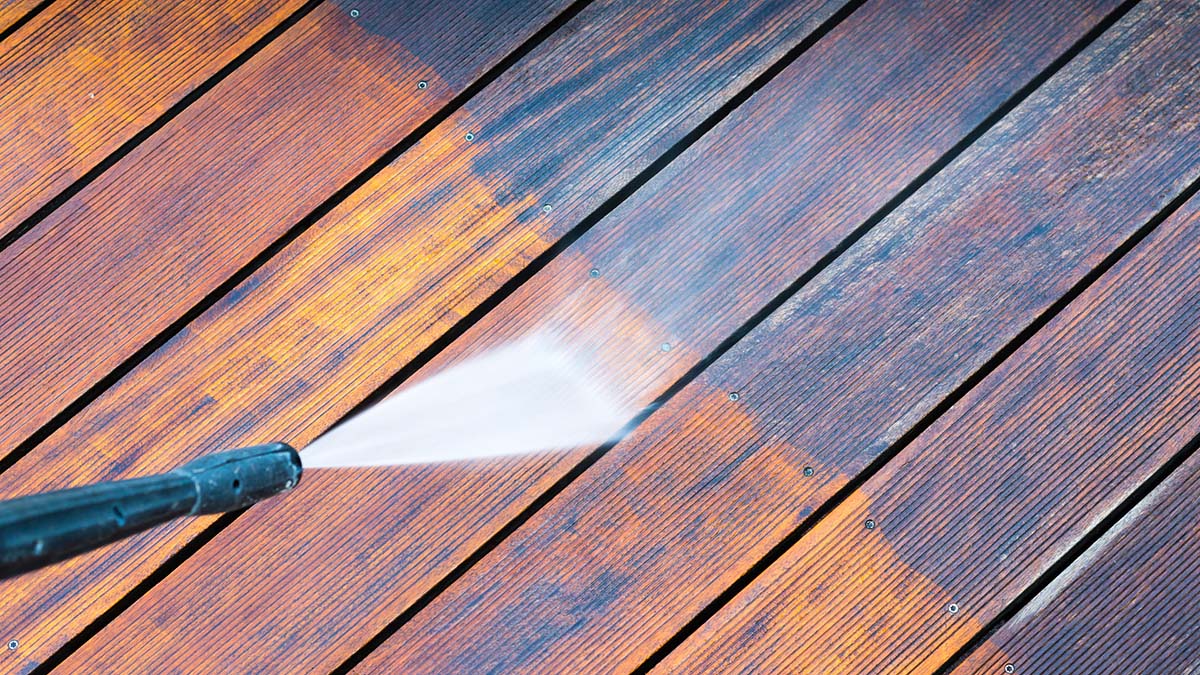PRESSURE WASHING AND SOFTWASHING: ROOF CLEANING 101

WHY ARE THERE BLACK STREAKS ON MY ROOF?
Gloeocapsa magma. Not exactly a common household name, but it should be. It is an aggressive type of photosynthetic cyanobacteria, or blue-green algae, that lives on the majority of asphalt shingle roofs in the southeastern United States today. The bacteria is highly resistant to the sun’s ultraviolet rays due to its black outer coating and first becomes noticeable as just a few dark spots or streaks on the roof. If left untreated, the bacteria can spread over the entire surface within several years. Since the roof is such a large and visible part of most houses, algae can turn a beautiful house into one that looks neglected. The black streaks make dark roofs look old, but the streaks are especially noticeable on lighter colored shingles. The good news for homeowners is that while algae on the roof is unsightly, it does not damage or reduce the life of the shingles. Moss and lichen, if left untreated, can cause significant structural damage to asphalt shingles. However, contrary to what many roof cleaners may claim, gloeocapsa magma does not appear to cause noticeable granular loss or diminish the structural integrity of the shingle. After cleaning, I have never seen a difference in the condition of shingles that were infected with algae verses the shingles that were clear of infection. Still, most homeowners want the algae removed from their roofs simply because the black streaks significantly reduce curb appeal. By the way, while gloeocapsa magma is an airborn bacteria, it is not toxic to humans like the dreaded black mold.
ROOF STAINS ARE MORE COMMON TODAY
An asphalt shingle consists of a mat, usually organic or fiberglass, asphalt with filler, and granular stone material. The asphalt in shingles is similar to the asphalt used to pave roads and is made from crude oil. The quality and amount of asphalt found in shingles varies by manufacturer. The asphalt is mixed with air and fillers to obtain the strength and durability desired. The fillers used are typically limestone or dolomite powder and can make up as much as 80% of the asphalt mix. Stone granules are applied to the top of the shingle and are fired to give a lasting color and protection to the shingle.
Roof algae was not much of a problem until the 1990’s. Many speculate that modern asphalt shingles are made with less petroleum based asphalt and more limestone filler to lower costs, though that is hard to quantify since most manufacturer’s shingle recipes are proprietary. What we do know is that algae feeds on limestone and loves moisture. Limestone fillers retain more moisture than oil based asphalt, provide a source of food, and therefore promote the growth of algae. Another possible explanation is that gloeocapsa magma is just more prevalent in the southeast than it was 30 years ago, much like the spread of fire ants and armadillos. By the way, algae is resistant to extreme hot and cold temperatures and is continuing to spread north, just like the fire ant.
ALGAE RESISTANT SHINGLES
Most likely due to increased complaints and warrantee issues with respect to algae, some asphalt shingle manufacturers are experimenting with ways to prevent the growth of algae on the roof. Some shingles now come with copper mixed into the asphalt or granular material because copper and other metals have been proven to retard the growth of algae. Other manufacturers recommend installing copper or galvanized metal strips on the ridge of the roof. In theory, the rain will wash traces of the metal down the roof and kill any algae growth. While I applaud efforts to make a streak resistant shingle, I doubt total eradication of algae is in our near future. After all, we have 100’s of different ant killers available, but we still have gazillions of fire ants in our back yards.
In Part II, I will detail the options homeowners have in dealing with roof algae and the ugly streaks it causes on our homes.
